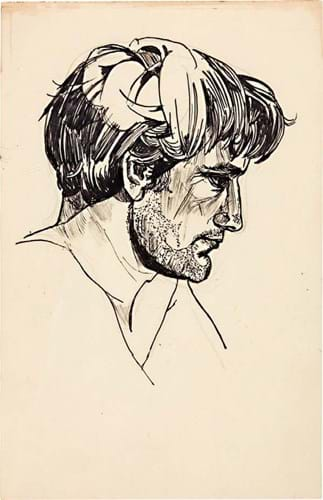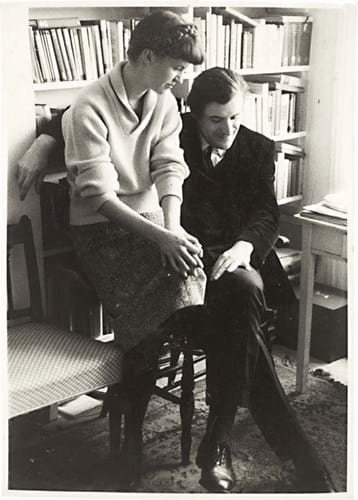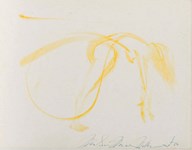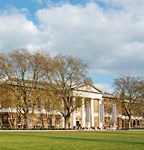Offered together with photographs and other items – even a rolling pin – the group of just 55 lots raised almost £778,000, including premiums.
The most expensive of them at the July 9-21 sale, at £35,000, was an album containing close on 200 family photographs dating from 1957-62.
Arranged in chronological order, the images for the first 32pp are accompanied by captions added in white ink by Plath, though later captions were added by Hughes.
The photograph of the couple reproduced with this report, however, was one taken in 1961 by David Bailey. Inscribed by Plath, it sold (in company with another press photo) at £10,000.
Lengthy letters
It was Plath’s lengthy letters to Hughes that were the real strength of the sale and three lots in this category each reached £24,000.
In one of them, a typed letter dated October 1956, she fulminates against the English literary scene following a rejection of Hughes’ fables by people who are “narrow, bigoted, and just plain ignorant” but, prompted by an article in the New Yorker and rumours about the mental health and confinement of JD Salinger, she goes on to make her own comments on madness and art.
“I am sure insanity is the most necessary state for a fine artist – that ‘divine madness’ where the terror & piercing insights he has daily are not locked in retreat or raving but made into works of art; a kind of flickering wild light of susceptibility playing over psychic states which, if frozen, would become intolerable and result in madness.”

Drawn shortly after their marriage, and perhaps while on their honeymoon, this head and shoulders sketch that Sylvia made of Ted Hughes was sold at £17,000 by Sotheby’s.
Living arrangement
Domestic matters prompted a very different letter of October 1956 that trebled the low estimate in selling at £22,000.
Plath tells Hughes “it is a simply a sin not to live with you”. As the cataloguer noted, the couple’s decision to live apart for the 1956-57 academic year had been made primarily out of fear that Plath would lose her Fulbright scholarship if she admitted to being married, but after three weeks apart both found their separation intolerable.
The greatest increase on estimate in the sale came with the appearance of a lot that offered a group of 33 typed recipe cards, some produced by Plath and others by her mother. Together with a rolling pin incised with decorative figures, the lot was estimated at £800-1200 but sold at £16,000.
Plath often mentioned her love for cooking and baking in her journals and elsewhere – and as Sotheby’s noted, she read some favourite cookbooks like novels.














